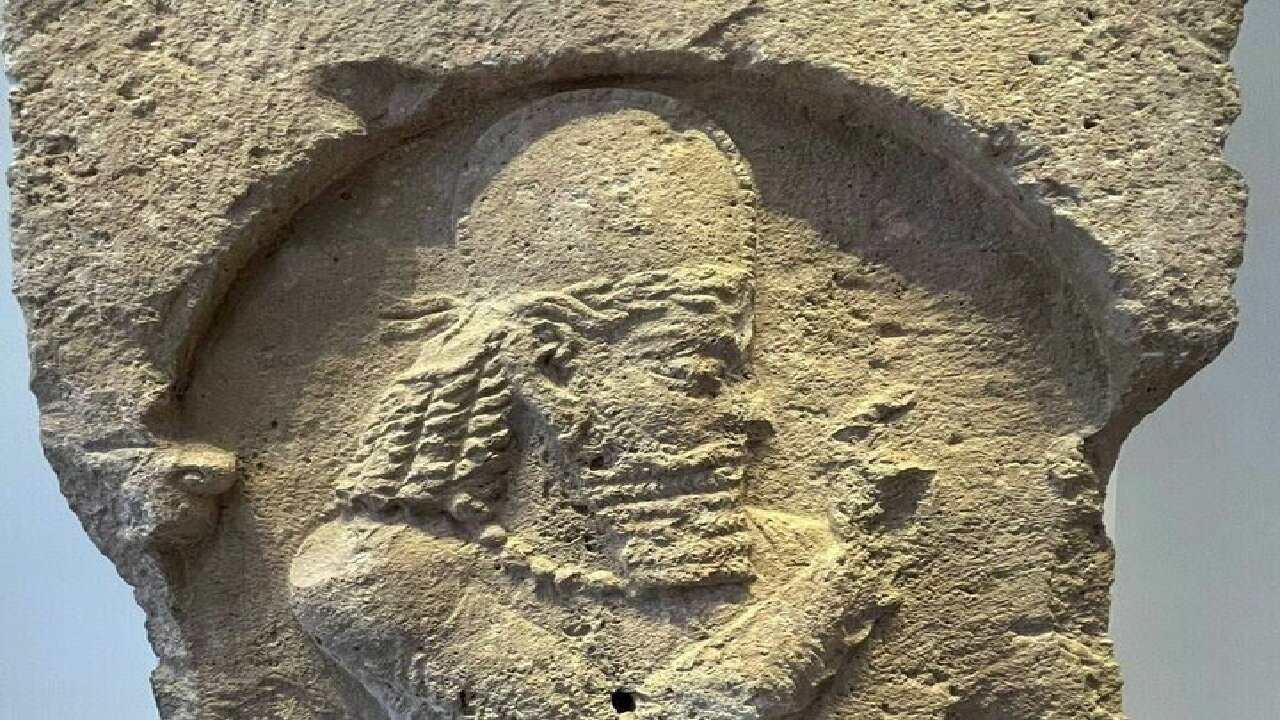From soldier to prince: new perspective emerges on recovered Sassanian relief

TEHRAN – An Iranian researcher specializing in Sassanid bas-reliefs believes that a recently recovered relief from the UK depicts a prince or a man of royal blood, not a soldier.
“The ribbon behind the Sasanian man's head suggests that he is a prince and from the royal family. In particular, he may be one of the children of Bahram II,” IRNA quoted Seyyed Rasoul Mousavihaji as saying on Wednesday.
Except for the initial authenticity of the work that has been confirmed, more detailed information is supposed to be announced after a complete investigation and research by a specialized group, the report said.
With all the speculation that the relief is a soldier, chieftain, Zoroastrian cleric, or nobleman, Mousavihaji has emphasized that the Sasanian relief does not depict a Sasanian soldier or military official, or a spiritual man. “Certainly, this relief is not a Sassanid soldier, and it is completely ruled out.”
“In that period, artists did not sculpt soldiers to show their ability, of course, I do not agree with the theory of “Sassanid chief" meaning an important figure who had military responsibility in that period,” the expert explained.
Mousavihaji, who serves as a professor of the archeology department at Mazandaran University, added: This is a prominent figure of a “Sasanian prince” and a member of the royal family.
“In the art style of the Sasanian period, only those who were from the royal family (shah, queen, prince) could have ribbons in their clothes.”
Mousavihaji said there is a very strong possibility that this Sassanid prince is one of the sons of Bahram II (r. 274 to 294 CE), who during his father's reign was definitely responsible for the political governance of one of the Iranian states.
Last month, the smuggled relief of a bearded man was returned home by the UK after being recovered from smugglers at Stansted airport.
Experts believe the over-one-meter-tall antique was hacked out of live rock or on-site carved rock. It depicts an imposing male figure carved in the 3rd century CE and is estimated to be worth £30 million.
The delicately carved relic was heading for the black market in Britain when it was seized by security personnel. The haphazard packaging, which may have been meant to imply that it was a useless item, made Border Force officers suspicious. The over-one-meter-tall antique was hacked out of live rock or on-site carved rock.
Dr. St John Simpson, a senior curator, and archaeologist in the British Museum’s Department of the Middle East, has said: “We rarely come across a case of something being cut out of the “living rock.” That’s a level of brutalism that surpasses anything.
“It belongs to a period when Iran was the center of a powerful empire stretching from Syria to the Caucasus and Central Asia, and with its capital at Ctesiphon, south of present-day Baghdad,” he said. “The Sasanians were powerful rivals of Rome and famous today for their fine silverware and cut glass.”
“It looks amazing,” Simpson said. “It is stunningly attractive. The valuation could be anything, really. We’re talking from £20m to £30m-plus. There’s never been anything like it on the market.”
He said the artifact would be “incredibly valuable” on the black market.
Iran's history places a great deal of significance on the Sassanid era, which saw a general renaissance in Persian art and architecture. In 2018, a collection of Sassanian historical cities in southern Iran, known as the “Sassanid Archaeological Landscape of Fars Region,” was inscribed on the UNESCO World Heritage list.
AFM
